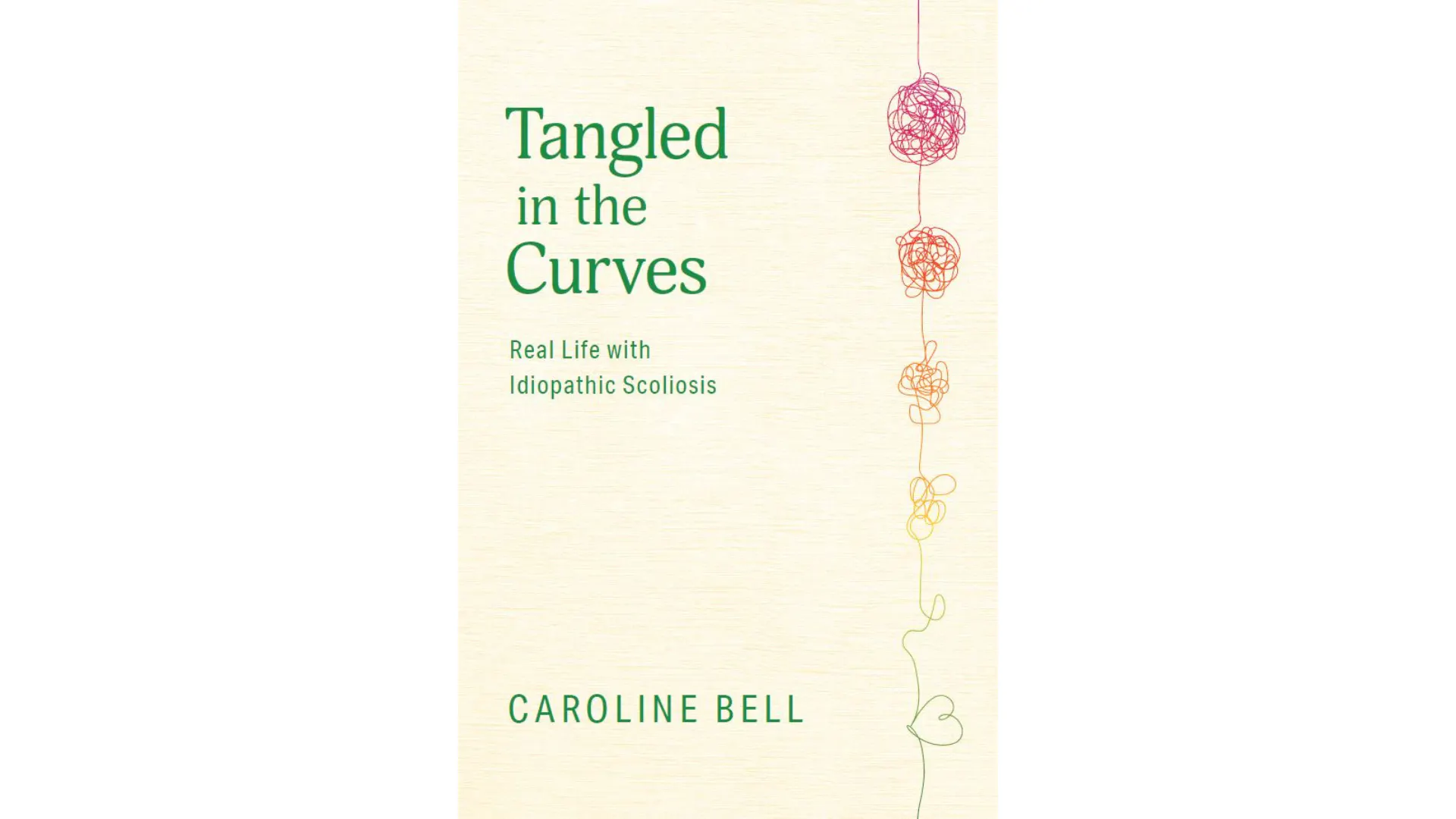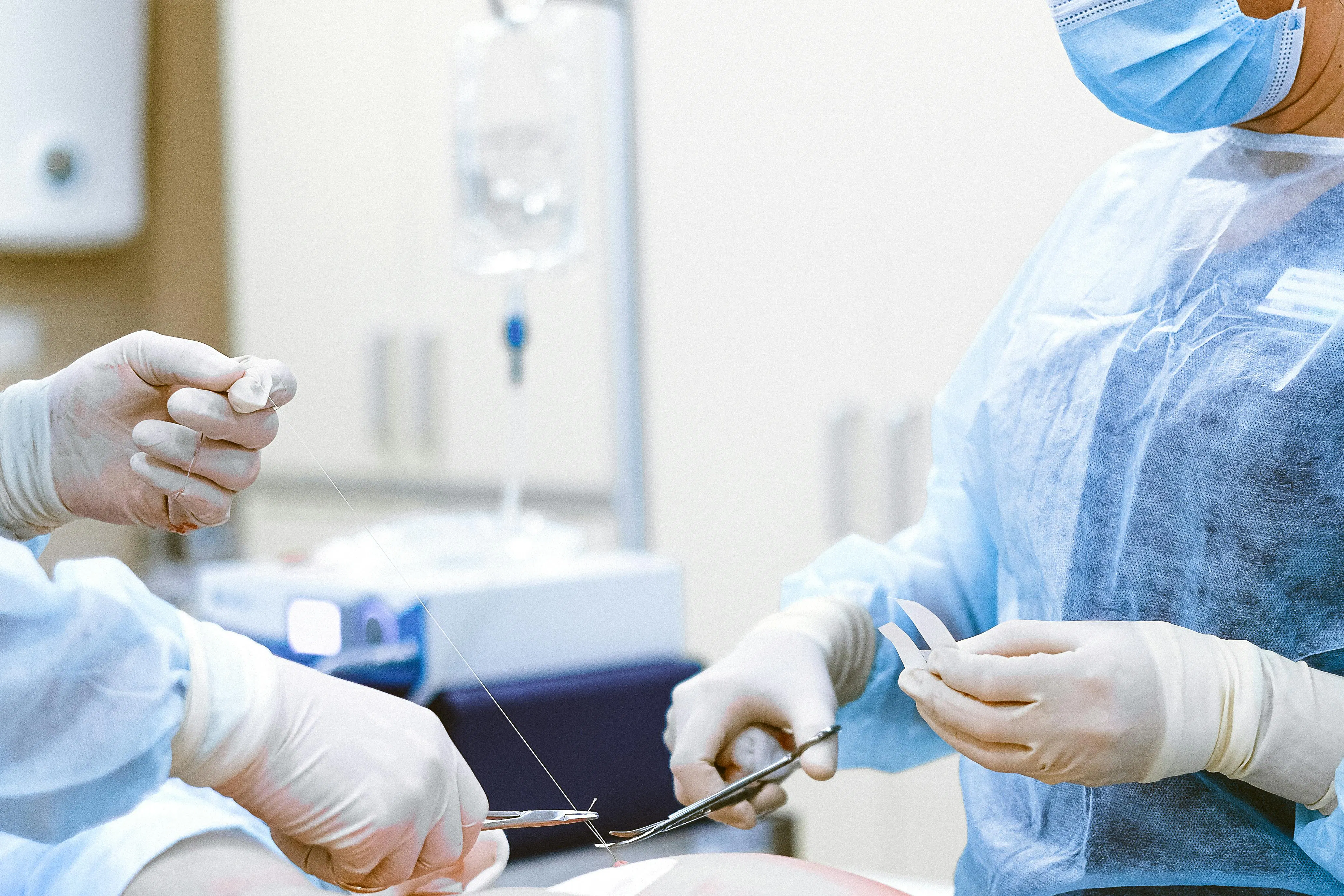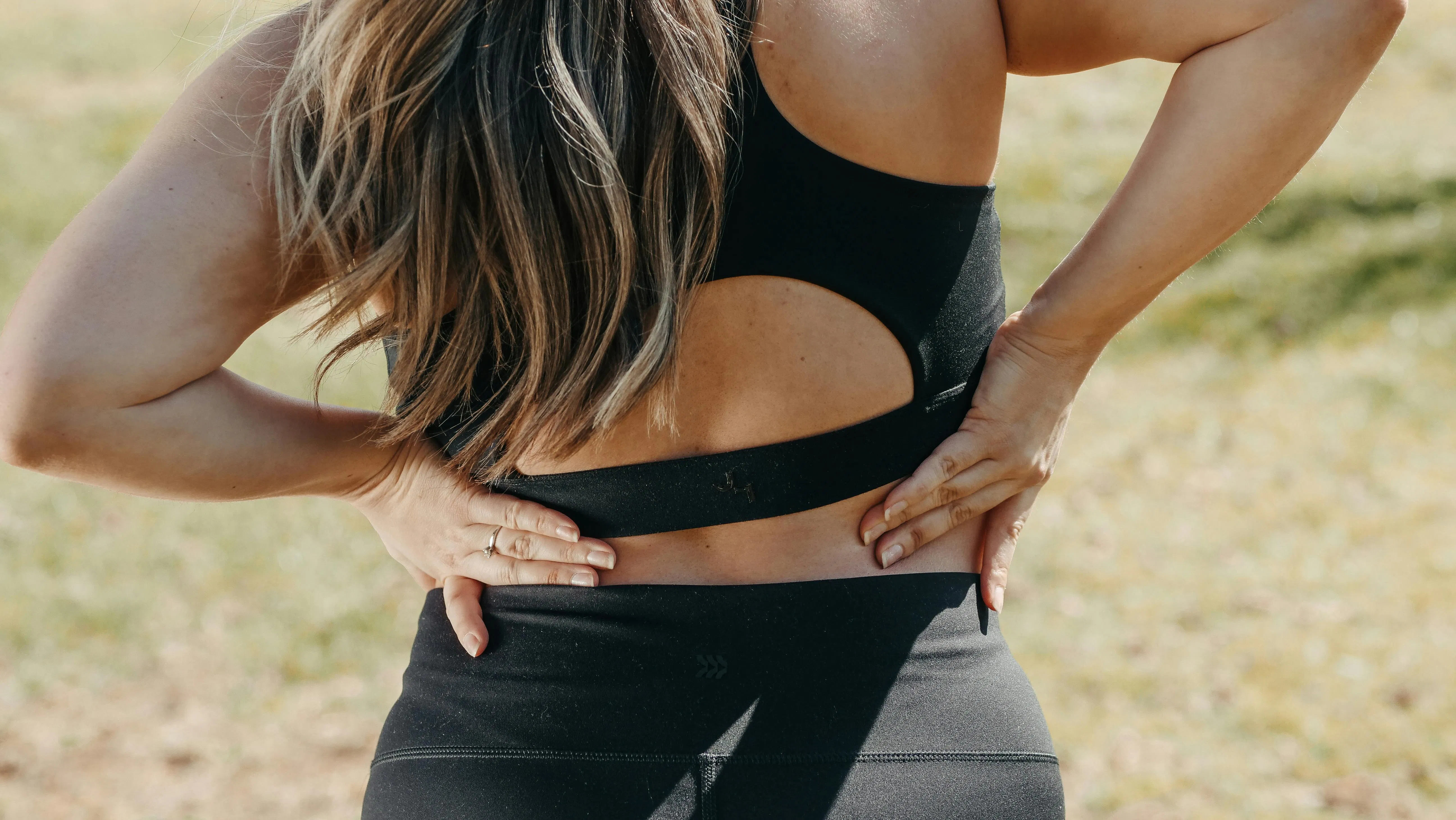
Reading Time
10
Published
May 1, 2023
Interview with Caroline Bell, Author of "Tangled in the Curves: Real Life with Idiopathic Scoliosis"
Momentum Health Co-Founder Evan Dimentberg sat down with Caroline Bell, author of "Tangled in the Curves: Real Life with Idiopathic Scoliosis" set to release summer 2023! Caroline discusses her journey as a patient and her vision for the future of scoliosis care.
Written By
Caroline Bell
What was the first sign that your spine was different?
When I was about 13 years old I began having constant pain in my neck and shoulders. Sitting, standing, lying down, moving too much or too little would send me into overwhelmed tears from the intensity of the pain radiating throughout. At the time we had no idea it could possibly be related to scoliosis, and nobody flagged it for us... hindsight is 20/20! This was when my saga with pain management and physical therapy began: middle school.
How were you diagnosed? At what age? What was your curve?
My care team knew scoliosis was in my family, but nobody connected the dots between my sudden shoulder pain and a changing spine. Continuing to see a chiropractor and massage therapist regularly, idiopathic scoliosis silently developed while in their care. Two years after the shoulder pain began, now 15 years old, lower back pain had joined the party.
My father was the one who finally caught something awry with my spine. He hugged me one morning as I was heading out to school and, shocked, said, “What’s that? Turn around.” A new, significant prominence was now a part of my low back. It seemed like my body had built up a mass of muscle to push back against a moderate spinal curve! Upon further inspection, a thoracic curve was also under development, pushing my ribs and shoulder blade in the opposite direction. My muscular and skeletal structure had certainly changed.
What resources did you use to learn about scoliosis?
The short answer: Almost none.
I can’t recall a single book, pamphlet, or even blog that gave me scoli info. My sources of information were only my X-rays and regular doctor visits. My parents did research about local chiros, physios, and massage therapists, hoping to find a good match for some pain relief for me. Unfortunately, it seemed none were trained in the biomechanics of scoliosis and could only temporarily treat pain.
I looked online a bit, but the internet was not as big as it is now. The couple times I did take to the internet I was treated to vivid surgery images instead of support and information. While some people may love surgical details and outcomes, I was not medically inclined - these images terrified me. None of this contributed to calm, support, or answer very many questions for a teenager full of pain and fear.
My care team did not encourage me to learn more about scoliosis in general, or about my own unique curves. There seemed to be an air of “there’s nothing more to know.” I just wanted somebody to show me that I would be ok and could live a normal life.
What was the hardest part of your first years with scoliosis?
A particularly comedic aspect of idiopathic scoliosis is how often it decides to join a person’s journey during adolescence. A time already full of emotion, conflict, and pressures where self-esteem and relationships are built and tested almost daily.
Self-esteem certainly took a hit those first years. Almost overnight I had a new responsibility for my health, my body was curving unexpectedly, I was in increasing pain, and - possibly the worst thing for a teenager - I felt different from my peers. The worst part of that year was going through it all without telling anybody about it, for fear they would notice just how different I was.
My life no longer seemed care-free or uncomplicated.
How has scoliosis impacted your quality of life, including socially and emotionally?
Scoliosis is a real pain in the…back. How it peppers itself throughout my life continues to surprise me! A large portion of my book dives into the daily life impacts that scoliosis warriors put up with.
Overall I lead a pretty wonderful life: I obtained a university degree, have a career I love, play sports, travel the world, make friends along the way, and have a lot of fun. Life is for living!
But that does not always come easy. Some days my back hurts a lot - either from doing too much or not doing enough. It can be frustrating when your brain wants to do everything but your body doesn't want to cooperate. At the end of those pained back days where I summoned extra energy to make it through, I am exhausted. Chronic pain can wipe you out physically, emotionally, and mentally. You have to learn how to take extra good care of your mind, body and soul and learn to rest.
A bit of rest can go a long way, but it is not always understood by folks who have no chronic illness to speak of. Scoliosis can have some social impacts on that front. Plans are made, tickets are purchased, invitations are sent… and on the day of I am simply too sore to go stand at a concert. Or simply too exhausted to go to a late dinner. Or simply too fed up with pain to put on a smile and attend a party. There is very little public education about the impacts of invisible chronic illnesses like scoliosis - many people do not know all of its impacts beyond having “a bent spine.” Sometimes the invitations stop coming, other times you are mocked for sitting out a game of volleyball.
The great news is that some people are ready to learn and eager to support. The even better news is that you can learn how to support your mind/body/soul for yourself! Like many things, the trickiest part is getting started - too many scolis either don’t know that there is support out there, or don’t know where to start.
What do you think is the solution to improving scoliosis management?
More scoliosis education is needed for care teams and patients. Implementing that education to offer proper support at every stage will become the solution.
As part of research for my book, I interviewed many scolis around the globe. I wanted to share their insights with other scolis to make this journey easier. Here is one of the biggest lessons that adult scolis learned “the hard way” and want others to know, wishing they had known this themselves at a younger age:
Learning about your scoliosis is the best thing you can do. Applying that information and finding proper treatment and exercise is absolutely possible - although not yet that easily accessible.
Scoliosis may not be that common, but it is not that rare. It may present itself in different ways, in different locations, in different families, to varying degrees, with completely different pain scales… but the basics of scoliosis are the same. Yet they are not taught to enough physical and psychological therapists for that information to truly filter down to the patients. My massage therapists, for example, all say they receive at most one page of scoliosis education during their training - that is not enough.
With more care teams educated about scoliosis, more kids have a chance of early detection. Further, patients educated about their own scoliosis at a young age will have less catching up to do in adulthood, and will be empowered to care for their spines and build their support networks throughout their entire lives.
Adult scolis would also be able to create strong partnerships with their trained care teams - teams who actually understand curvy spines. At the moment, it is fantastically difficult to find a provider who knows what scoliosis is, how to care for it, and how to teach the patient to care for it life-long. It leaves many of us feeling alone with no plan or hope for pain relief (not to mention the time, money, and energy of being let-down after trying one non-scoli educated practitioner after another.)
Education and support are the key ingredients in helping scoliosis patients manage their curves. Regaining some control instead of the curves controlling you is a feeling like no other - but it does not have to wait until adulthood. This education can and should begin with the care teams to be shared with patients.
Do you think surgery could have been avoided in your case? How?
I prefer not to think about this, because it’s not something I can change now at all. But in a parallel universe? Maybe there could have been a chance.
I was being seen weekly by a chiro and massage therapist. They had front row seats to my musculoskeletal health every visit, and the massage therapists could see my back in full view. Had they had more training and education (already knowing it was in the family), maybe they would have watched closer; documented better; ran more tests; connected the shoulder pain to the sagittal plane change that is so often a precursor to scoliosis… caught it earlier than the advanced degrees the X-rays showed when finally discovered.
Maybe I could have been braced earlier. Maybe I could have been monitored more regularly. Maybe I could have been taught scoliosis-specific exercises, learning to counter the curves rather than letting them wildly do whatever they wanted to do. Maybe I would not have had to re-learn how to walk in a hospital as a teenager after spinal fusion surgery. Maybe I would not be carrying metal engraved into my vertebrae today.
It’s a great big maybe.
Where do you see Momentum Spine fitting into scoliosis care?
Momentum Spine’s scanning and tracking software could easily fit right into a young adult’s scoliosis journey. A non-radiation option to track children showing musculoskeletal changes or with known scoliosis in the family (paired with additional scoliosis education across the board) were part of the missing pieces in my early care journey. Waiting to see changes via X-ray 6 months apart takes too long sometimes - scoliosis does not always wait 6 months to change.
Early detection is so important to the outcome of the scoli-saga. Once detected, you need a care team closely monitoring regularly-provided data about your curves and asymmetries. This type of information is key to creating a good care plan for your spine. Keeping your eyes shut against musculoskeletal changes won’t help anyone. Not knowing what to look for won’t help much either. Instead of the “wait and see” method, why not go for the “try and see” method?
Who would you recommend trying Momentum Spine?
Doctors, spine specialists, physical therapists… anybody who plays a role in a scoliosis patient’s care team could try out Momentum Spine. From my decade of experience with various care teams, I could see the benefit of reviewing scans and measurements in-app at the start of an appointment or treatment.
Instead of a patient walking into an appointment on any given day and guiding the treatment session by only saying, “This spot on my back hurts today,” the provider could take a closer look at imbalances in Momentum. This data, paired with that scoliosis education mentioned earlier, would allow for more informed decisions to provide better care, correction, and pain relief.
Of course, the care teams need data to go off-of - either scanning patients in the clinic or requesting the patient do at-home scans. I have tried out the app myself and it took just a couple minutes for a friend to complete the scans for me. This certainly took less time and was less of a nuisance than going to an X-ray clinic and waiting for a dose of radiation.
A software that scans for asymmetries, knows what to look for, is solely focused on scoliosis, and reports back to your care team could itself be a persona of the care team: Dr. Momentum.
Please tell us more about your book coming out this summer.
Tangled in the Curves - Real Life with Idiopathic Scoliosis will be published this Summer 2023 to hold the hand of scoliosis warriors through every stage of their scoli-saga.
It provides first-hand relatable experiences of life with scoliosis, with and without corrective surgery, through an honest and supportive voice. It takes the reader through the full physical and emotional aspects of the scoli-journey: diagnosis, bracing, surgery, and life into adulthood.
Tangled in the Curves is a mix of my own experiences and lessons learned “the hard way,” as well as those of numerous other scoliosis warriors around the planet. Scolis, parents, doctors, and health care providers were all interviewed for this book to create an authentic view into the scoli world.
For scoli families with younger patients, guidance is shared on what supports we would have benefited from at a younger age. For teens, it shares tips for scoliosis at school including how to get comfortable with your new back brace. Anybody about to go through surgery will be walked through the day-before, day-of, and days after: what to pack, what to expect, how to set yourself up for the best recovery possible. For all of those living with scoliosis - braced, fused, or simply curvy - it will make you feel “seen” through the tough parts of living with scoliosis, while providing an abundance of reminders that you have immense inner strength.
What was your goal in writing this book?
My goal is to make every scoliosis patient feel less alone, lost, or scared with their curves. Even if you have never met somebody in-person with scoliosis, a brace, or a spinal fusion, this book is here to support you - it understands what you live with daily.
I wrote this as the book I wish I had access to when I was freshly diagnosed, dealing with a brace, feeling completely different, lost beyond words, pained, and facing surgery. I had no other experiences to look to for support. With this in mind, I compiled such stories and tips to share with other scoli warriors in one neatly bound volume.
It was created as a resource to support scolis early-on in their saga, as well as to support adult scolis who, historically, were not given such support. This book is a contribution to erasing feelings of loneliness and fear with scoliosis.
What is the impact you aim to achieve?
This book’s impact is three-fold:
1. Empower scoliosis patients, making sure they know they are not alone and can untangle a portion of their curvy journey.
2. Showcase the need for education and support throughout the entire scoliosis saga.
3. Kick-start conversations with non-scoliosis folks (parents, caregivers, doctors, care teams, friends, family) to exhibit how strong their loved ones/patients truly are to live with scoliosis.
Along with this book, I am collaborating with scoliosis foundations and companies to speak about the importance of scoli education and support. Follow publishing progress, collaborations, and never-ending scoliosis support on Instagram: @the_scoliosis_book .
This scoliosis journey may throw some curves your way, but know that you are not alone! Together we can handle it.
Other
More articles you may find interesting


